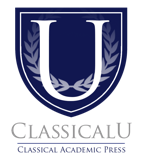Back to Course
The Art of Poetry
0% Complete
0/0 Steps
-
CONVERSATIONS
Conversation 1: Why Study Poetry? (Preview Content)1 Topic -
Conversation 2: Understanding Poetry through Poems2 Topics
-
Conversation 3: Poetry and Faith2 Topics
-
LESSONS & ACTIVITIESLesson 1: Images (Preview Content)2 Topics|1 Quiz
-
Activity 1: Images (Preview Content)
-
Lesson 2: Metaphor3 Topics|1 Quiz
-
Activity 2: Metaphor
-
Lesson 3: Symbols4 Topics|1 Quiz
-
Activity 3: Symbol
-
Lesson 4: Words3 Topics|1 Quiz
-
Activity 4: Words
-
Lesson 5: Sound3 Topics|1 Quiz
-
Activity 5: Sound
-
Lesson 6: Rhythm3 Topics|1 Quiz
-
Activity 6: Rhythm
-
Lesson 7: Shape3 Topics|1 Quiz
-
Activity 7: Shape1 Topic
-
Lesson 8: Tone3 Topics|1 Quiz
-
Activity 8: Tone
-
Lesson 10: Verse Forms2 Topics|1 Quiz
-
Activity 10: Verse Forms
-
Lesson 11: Shaping Forms2 Topics|1 Quiz
-
Activity 11: Shaping Forms
-
Lesson 12: Emily Dickinson—A Case Study in Form2 Topics|1 Quiz
-
Activity 12: Emily Dickinson
-
Lesson 13: Open Verse3 Topics|1 Quiz
-
Activity 13: Open Verse
-
Lesson 14: Walt Whitman—A Case Study in Open Verse2 Topics|1 Quiz
-
Activity 14: Walt Whitman
-
Lesson 15: Narrative Poems2 Topics|1 Quiz
-
Activity 15: Narrative Poems
-
GROWING STUDENT INTEREST IN POETRYLesson 16: Growing Student Interest in Poetry2 Topics
Lesson 5 of 32
In Progress
Activity 1: Images (Preview Content)
Christine Perrin shows us how she works with students to more deeply understand the use of images in poetry. Please note that this activity video is also included at the end of Lesson 1: Images.
Discussion topics
- (00:00) Chapter 1, Activity 1: Take five minutes and freewrite about images from one of the four seasons. We write in order to figure out what we think about things and to generate ideas about things.
- (08:50) Chapter 1, Activity 2: Describe an image that is important to you. Discuss and identify an image that’s important to your class. What kind of image did you choose? Could they be called symbols? Why or why not? If they are symbols, what multiple meanings do you images represent?


